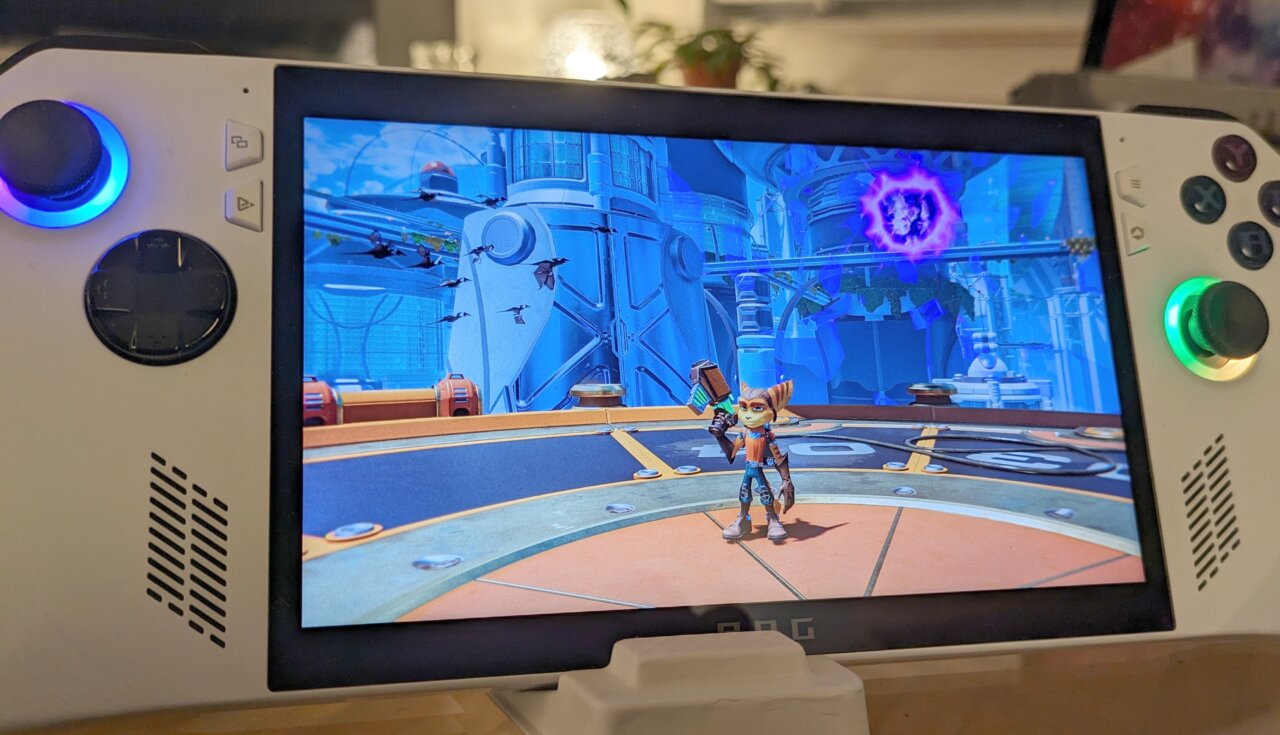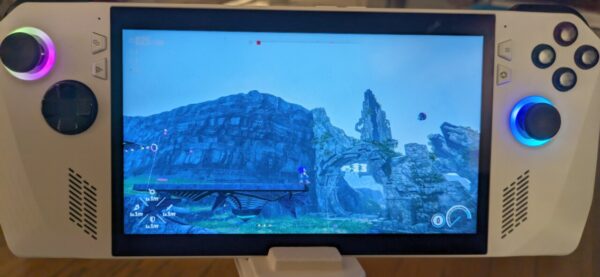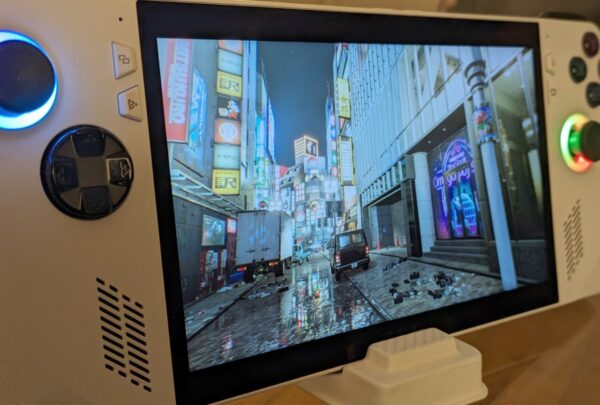A couple of months ago, ASUS was nice enough to send me an ROG Ally for review. Even though it was the lower-spec Z1 version (as opposed to the Z1 Extreme version with a more powerful chipset), I still loved pretty much everything about it. I’ve since been able to spend even more time with the Z1 Extreme ROG Ally, and you know what? I’m still a huge fan of the handheld, whether we’re talking about the higher- or lower-end versions.
Unsurprisingly, much of what I liked (and what little I disliked) about the Z1 version of the Ally goes for the Z1 Extreme version, too. Apart from the chip and the price, the two versions are identical. This means that the great ergonomics are the same, as is the lighter weight, as is the software experience. I know that a lot of people like to complain about Windows gaming, but I feel like a lot of that is overblown – and what’s more, the Ally’s launcher, Armoury Crate, does an outstanding job of bringing everything together in one location. (And to add to that, one look at the Ally’s changelogs over the past few months shows how committed ASUS has been to fixing whatever issues the Ally has had since launch.)
This also means, of course, that the battery life still isn’t great. In fact, if anything it might even be worse on the Z1 Extreme version of the Ally, since the greater power means you’re probably going to play more demanding games, which in turn sucks up more of the battery. It feels like an unavoidable problem that’s going to be present no matter what – though the problem of “my handheld is powerful enough to play almost any game I can think of” is kind of the definition of first-world problems.
Where the Z1 Extreme ROG Ally outclasses the Z1, obviously, is when you’re looking at what games it can play, and how those games look while you’re playing them. While I didn’t have too many issues back in that original review, for the most part I also wasn’t exactly throwing the most demanding games at it. I did with the Z1 Extreme, and while the results weren’t perfect, they were still good enough that I can see why you might want to spend the extra hundred dollars.
What really bumped the Z1 Extreme up in my eyes, though, was comparing it to the Lenovo Legion Go. The two handhelds, after all, have basically the same innards, so that’s a fair comparison – but it also makes it unbelievable how much better the Ally performs. I made a point of trying many of the same games that the Legion Go struggled with on the Ally, and almost without fail, they performed better on ASUS’ handheld.
Take Ratchet & Clank Rift Apart: it literally wouldn’t even run on the Legion Go when I tried playing it, whereas it looked gorgeous and ran without difficulty on the Ally. The same goes for Sonic Frontiers: it was a no-go on the Legion Go (sorta-pun not intended), but worked without any issues on the Ally. Ghostwire Tokyo was basically a slideshow on the Lenovo machine, but performed very nicely on the Ally. Time and again, games that either struggled to run or that had to have their settings turned way down on the Legion Go didn’t have any of those issues on the Ally.
To be fair, I should note that the Ally’s performance in some games left a little to be desired. Star Wars Jedi: Survivor, which obviously struggled on the Legion Go, crashed repeatedly when I tried running it on the Ally, even with its settings turned all the way down. And for some reason, Alan Wake II wouldn’t even start on the Ally – after finding a workaround for an error message that said there wasn’t enough memory, it got stuck on an endless loading screen. (Though on that latter point, I should note that it was working well enough a month ago, so it seems like an update may fix that issue.) But if my only problem with the ROG Ally Z1 Extreme is that it can’t run a couple of extremely demanding games (the former of which is infamous for being a terrible PC port)…again, that’s hardly a massive issue.
Ultimately, though, I have to go back to my review of the Z1 version of the ROG Ally, and basically restate the question that was implicit in that review: is it worth spending the extra hundred dollars (or whatever the difference might be when you’re reading this) to get a more powerful chip? And truthfully, that’s hard to answer: I can see the benefits of getting the Z1 Extreme version, just as I can see the value of saving $100 or so if you don’t mind having a slightly smaller library on the Z1 Ally.
My conclusion, though, is basically the same: whether you’re buying the Z1 Extreme version of the ROG Ally or the weaker Z1 version, you’re still getting an excellent handheld. ASUS may have stiff competition from Valve (and less stiff competition from Lenovo and all kinds of Chinese handheld companies, plus a great unknown on the horizon in the MSI Claw), but as far as I’m concerned, the ROG Ally is the current best handheld gaming PC.
ASUS provided us with an ROG Ally Z1 Extreme for review purposes.





